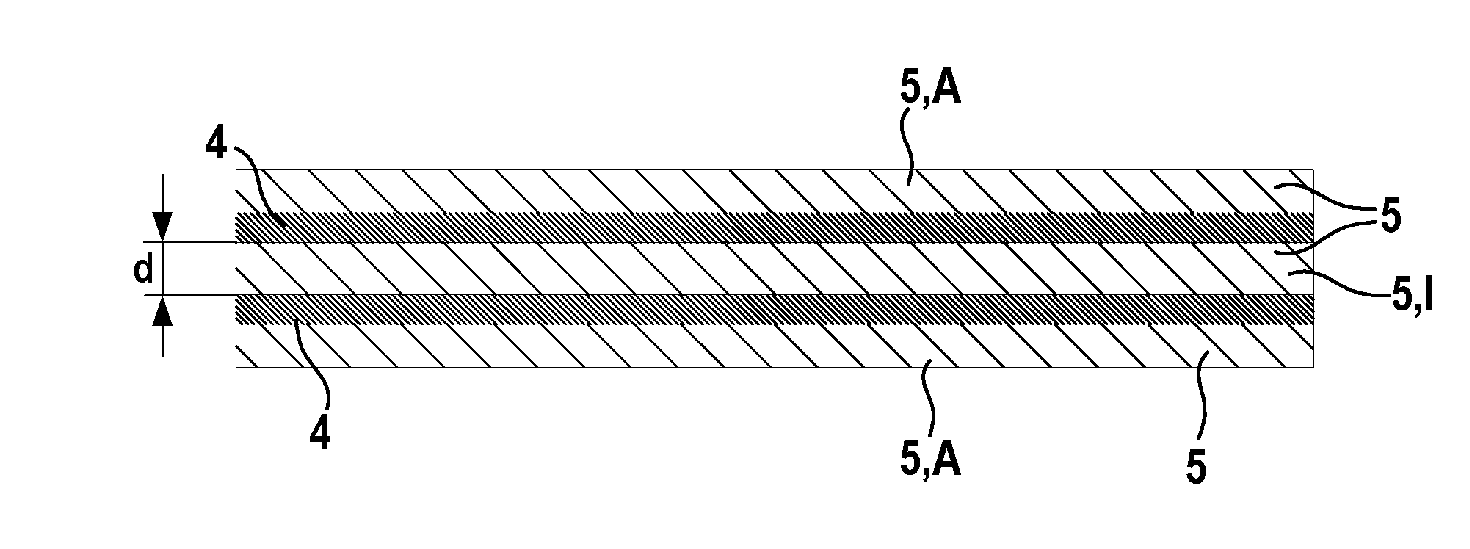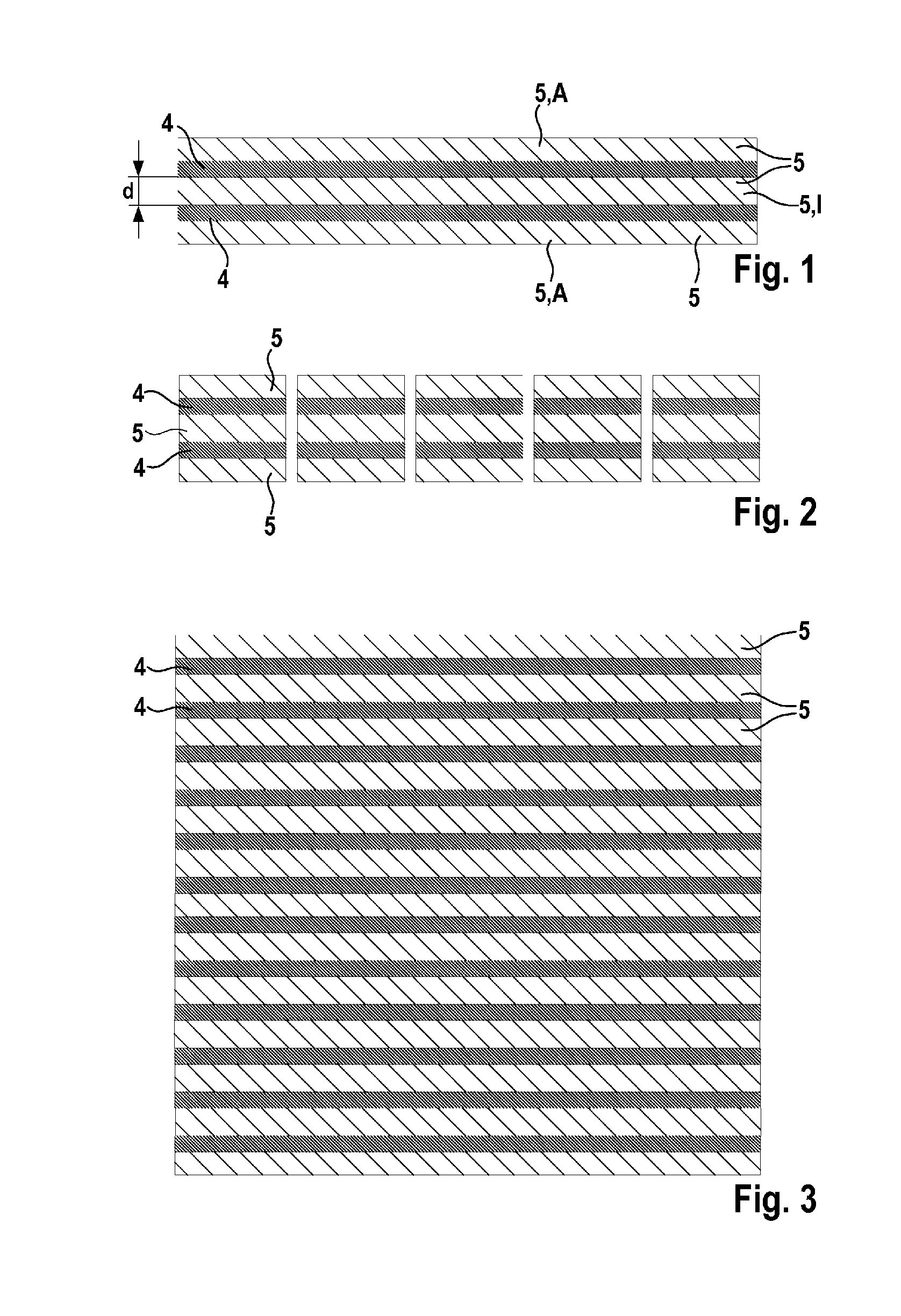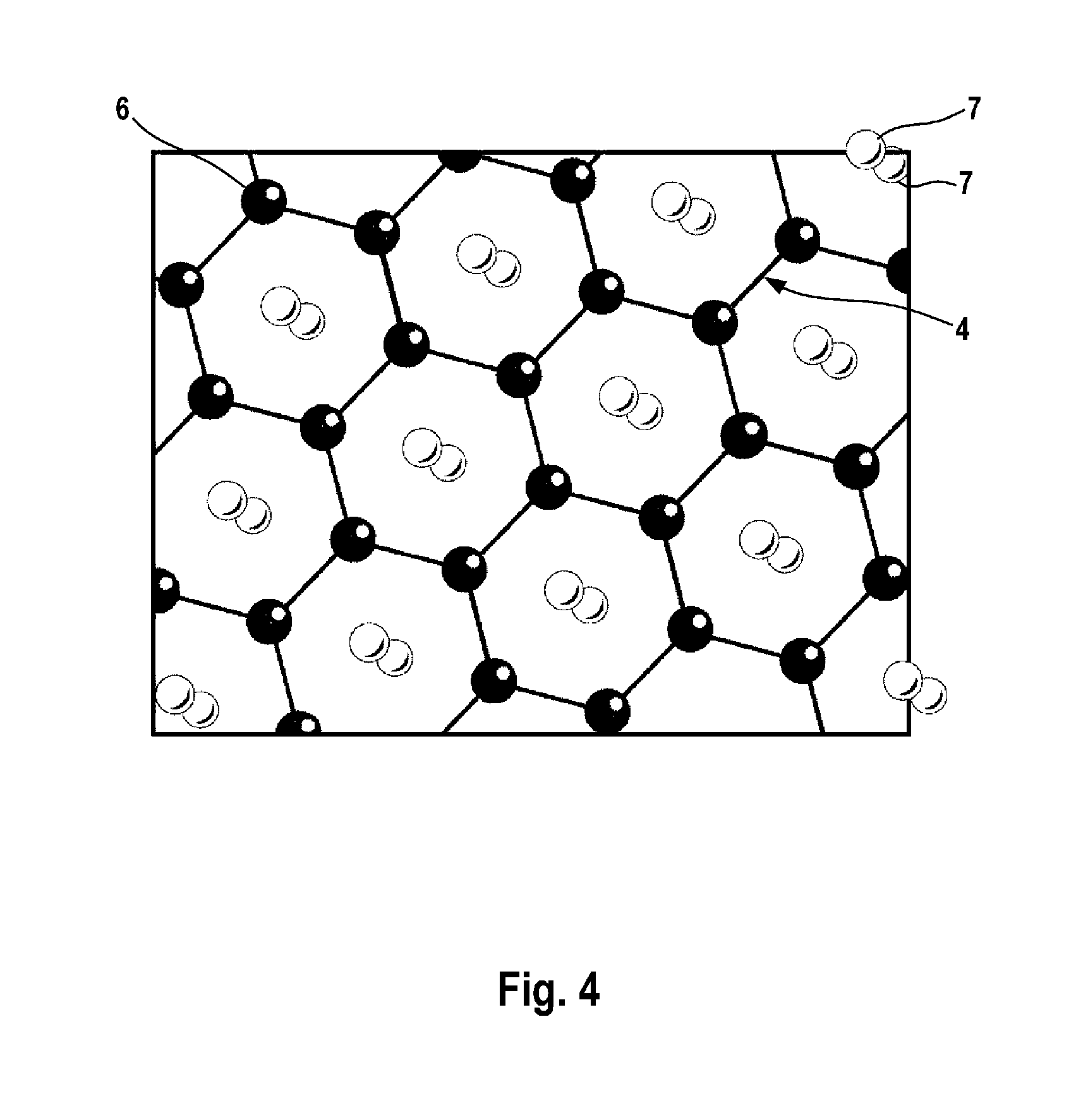Galvanic element
a technology of galvanic elements and graphene, which is applied in the field of galvanic elements, can solve the problems of limited lithium uptake capacity of graphite, difficult dispersibility, and specific reversible theoretical capacity of 372 mah/g, and achieves high lithium ion storage capacity, high affinity between lithium atoms and graphene layers, and fast kinetics
- Summary
- Abstract
- Description
- Claims
- Application Information
AI Technical Summary
Benefits of technology
Problems solved by technology
Method used
Image
Examples
first embodiment
[0066]FIG. 1 shows a layer system 5,4,5,4,5 of a negative electrode according to the disclosure. In this embodiment, the layer system 5,4,5,4,5 comprises two graphene layers 4 and three polymer layers 5. The polymer layers 5 are arranged alternately with the graphene layers 4. A polymer layer 5 having a layer thickness d is arranged between the two graphene layers 4 and can thus be referred to as internal polymer layer I. Furthermore, the two outer layers A of the layer system 5,4,5,4,5 are also polymer layers 5. FIG. 1 shows that the outer polymer layers A of the layer system 5,4,5,4,5 have a lower layer thickness d than the internal polymer layers 1 of the layer system 5,4,5,4,5.
second embodiment
[0067]FIG. 2 shows that a plurality of layer systems 5,4,5,4,5 according to layer systems 5,4,5,4,5 according to the disclosure has been produced by division of the layer system 5,4,5,4,5 of FIG. 1.
third embodiment
[0068]FIG. 3 shows a layer system 5,4,5,4,5 of a negative electrode according to the disclosure. In this embodiment, the layer system 5,4,5,4,5 comprises a plurality of alternating graphene layers 4 and polymer layers 5. The two outer layers A of the layer systems 5,4,5,4,5 are polymer layers 5 in this embodiment too.
[0069]FIG. 4 shows a graphene layer consisting of one graphene sheet. FIG. 4 illustrates that lithium atoms are attached to the graphene sheet on both sides. FIG. 4 shows that the lithium atoms 7 are present in a ratio to the carbon atoms 6 of the graphene layer 4 of 2:6.
[0070]FIG. 5 shows a first embodiment of an electrochemical element according to the disclosure which comprises a negative electrode 1, a positive electrode 2 and a separator 3. FIG. 5 shows that the negative electrode comprises a layer system 5,4,5 composed of a plurality of alternating graphene layers 4 and polymer layers 5. FIG. 5 shows that lithium atoms 7 are attached to the graphene layers 4 on bo...
PUM
| Property | Measurement | Unit |
|---|---|---|
| thickness | aaaaa | aaaaa |
| thickness | aaaaa | aaaaa |
| thickness | aaaaa | aaaaa |
Abstract
Description
Claims
Application Information
 Login to View More
Login to View More - R&D
- Intellectual Property
- Life Sciences
- Materials
- Tech Scout
- Unparalleled Data Quality
- Higher Quality Content
- 60% Fewer Hallucinations
Browse by: Latest US Patents, China's latest patents, Technical Efficacy Thesaurus, Application Domain, Technology Topic, Popular Technical Reports.
© 2025 PatSnap. All rights reserved.Legal|Privacy policy|Modern Slavery Act Transparency Statement|Sitemap|About US| Contact US: help@patsnap.com



